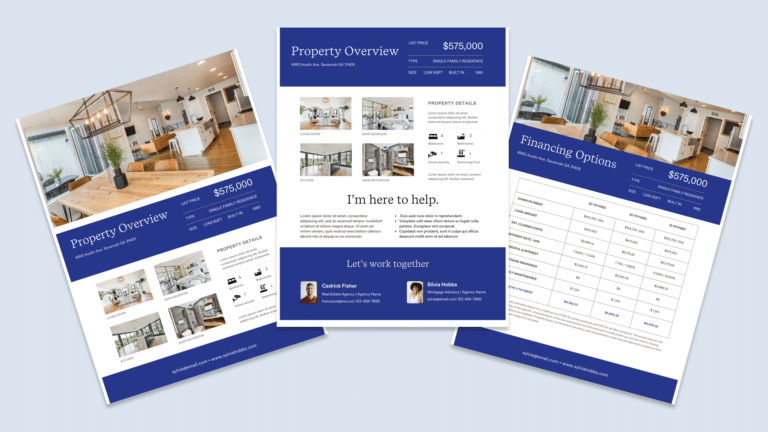If you’re a mortgage broker preparing to launch your own company, you’re in the right place.
The first step is a solid business plan, your blueprint for long-term growth and operations. But once that foundation is set, the next step is all about execution. That’s where your go-to-market (GTM) strategy comes in.
Think of your GTM strategy as your playbook for launching strong and attracting clients from day one. It’s action-oriented, time-bound, and tailored to your niche. Here’s how to break it down into clear, achievable steps.
1. Identify Your Ideal Clients
Before you launch, you need to define exactly who you’re serving. That means moving beyond a general idea of “homebuyers” and getting specific about your niche.
Are you focused on:
- High-income professionals building wealth through real estate?
- First-time buyers navigating the mortgage process for the first time?
- Real estate investors seeking financing for rentals or multi-family units?
- Self-employed borrowers needing flexible documentation options?
- Veterans and military families looking to maximize VA benefits?
Targeting a defined audience ensures your messaging, loan products, and services are aligned with the people most likely to work with you and refer you.
2. Define a Clear Value Proposition
Why should a client choose your brokerage over another?
Your value proposition should speak directly to your target audience. For example:
- For high-earners: “Exclusive access to private financing and a white-glove experience tailored for busy professionals.”
- For first-time buyers: “Step-by-step guidance and expert support to help you buy with confidence — and without confusion.”
- For investors: “Fast, investor-friendly financing and a team that understands your portfolio strategy.”
- For self-employed borrowers: “Flexible mortgage solutions built for business owners and freelancers.”
- For veterans: “A brokerage dedicated to maximizing your VA loan benefits with zero-down options.”
By getting specific, you’ll position your business as a clear solution to your clients’ unique needs.
3. Set Measurable Business Goals
Every successful GTM strategy is anchored by clear metrics. Set goals tied to revenue, client acquisition, and operational performance. For example:
- Break-even point: Close 3 loans/month at $1M+ each
- Profitability: 6 loans/month at $1M+ to generate healthy margin
- Lead conversion: Target a 20%+ conversion rate from inquiry to close
- Referral rate: Aim for 90%+ client satisfaction and ongoing referrals
Tracking key performance indicators (KPIs) helps you course-correct early and scale efficiently.
4. Choose a Marketing Strategy That Matches Your Strengths
There’s no one-size-fits-all marketing plan. Choose one or a blend of these based on your audience, budget, and personality:
Option 1: Organic & Referral-Based Growth
Ideal for brokers with strong personal networks or local ties.
- Post helpful content consistently on LinkedIn, Instagram, and X
- Launch a blog or YouTube channel to educate buyers
- Build referral partnerships with real estate agents, financial advisors, and CPAs
- Attend community events and industry meetups
- Offer referral bonuses to happy clients
🧠 Pros: Low cost, high trust. Cons: Slower to scale.
Option 2: Paid Digital Advertising
Best for those with a marketing budget and desire for faster growth.
- Invest $2,000+/month in Google and Meta ads targeting buyers and investors
- Use SEO and content to rank for mortgage-related search terms
- Retarget website visitors to stay top-of-mind
- Partner with real estate influencers to expand reach
- Promote webinars or educational offers with lead capture forms
🧠 Pros: Fast lead flow. Cons: Requires testing and optimization.
Option 3: Community Engagement & Partnerships
Great for brokers who thrive on in-person interaction and local impact.
- Partner with nonprofits or housing programs for workshops
- Sponsor local events or buyer education sessions
- Collaborate with builders, developers, and realtors
- Publish a monthly local real estate newsletter
- Table at home shows and financial literacy expos
🧠 Pros: Builds long-term brand loyalty. Cons: Takes more time to nurture.
5. Build a Sales Pipeline That Matches Your Business Model
Once leads come in, you need a system to move them toward closing. Choose a pipeline structure that fits how you want to work:
Option 1: High-Touch, Relationship-Driven
Ideal for brokers serving high-net-worth clients or investors.
- Referral-based lead gen and personalized outreach
- Strategy calls and custom loan structuring
- Concierge-level service from pre-approval to post-close
- Strong referral incentives and lifetime client support
Option 2: Digital and Scalable
For tech-savvy brokers who want to scale volume efficiently.
- Capture leads via website forms, ads, and automation
- Use instant pre-qualification tools
- Set up email and SMS workflows for client nurturing
- Assign licensed LOs to jump in once leads are ready
- Track everything in a CRM with dashboards and KPIs
Option 3: Local, Education-First Model
Perfect for brokers focused on financial literacy and trust-building.
- Generate leads through in-person events and local referrals
- Provide educational consultations and long-term planning support
- Handle pre-approvals face-to-face
- Assign clients a single point of contact through closing
- Follow up with ongoing resources and community involvement
6. Track, Measure, and Optimize
Your GTM strategy isn’t “set it and forget it.” Use data to refine every part of your approach:
- Build a dashboard that tracks monthly revenue, leads, and close rates
- Use automated reports to stay on top of progress toward break-even
- Optimize campaigns and systems based on conversion data
- Identify bottlenecks and adjust your team or tech stack accordingly
📈 Consistent performance tracking ensures your business stays agile and profitable as it grows.
Final Thoughts
Launching your own mortgage company is more than a license and a logo — it’s a business that needs structure, systems, and strategy. By combining a clear audience focus, value-driven messaging, and the right marketing and sales engines, you can set your company up for long-term success.
And if you’re looking for a platform that helps you go to market faster, with licensing, compliance, tech, and deal support already built in, Morty has you covered. Connect with our team below to learn more.







